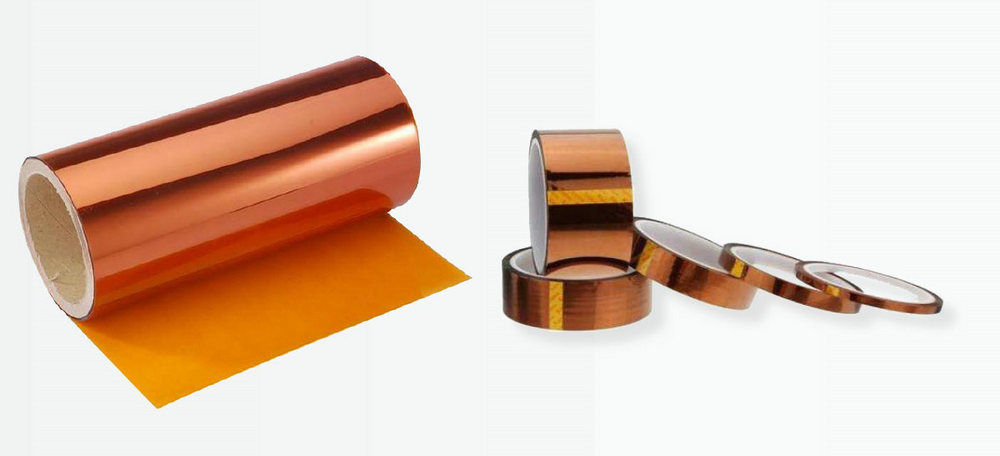
This article provides a detailed introduction to polyimide film, a high-performance material, in simple and understandable language. We begin by exploring its unique origins and remarkable properties, then delve into its important applications in aerospace, electronics, new energy, and more. Discover why it has become an indispensable key material across various industries.
In the fascinating world of materials science, new and incredible materials are being born every day. Polyimide film, however, stands out as a low-key yet highly capable "all-round champion," playing a significant role in many high-tech fields, often unnoticed. It might be unfamiliar to some, but it has already integrated into our lives, from spacecraft soaring in the sky to smartphones in our hands. Let's uncover the mystery behind polyimide film, learn about its extraordinary properties, and understand why it holds such an irreplaceable position in various sectors.
The creation of polyimide film owes much to the wisdom and exploration of scientists in laboratories. It is primarily made from two raw materials—anhydrides and diamines—joined together through a condensation reaction. Its molecular structure is like a carefully built "chemical puzzle," consisting of numerous aromatic rings and imide groups. These special structures are akin to its "superpower genes," granting it unparalleled stability and exceptional performance.
There are two common methods used to make polyimide films: the one-step method and the two-step method. The one-step method directly combines the anhydride and diamine for immediate polyimide formation, while the two-step method first synthesizes polyamic acid, followed by dehydration and imidization, ultimately forming polyimide film. Just like different cooking methods, these approaches impact the "texture" (performance) of the film. For instance, films made via thermal imidization often have superior mechanical properties, resembling a carefully baked pastry—firm and resilient.
High-Temperature Resistance: Polyimide film is a "firefighter" in the materials world, with impressive heat resistance. It can operate in temperatures up to 260°C for long periods, and even withstand extreme temperatures above 500°C briefly. Unlike ordinary materials that would melt or deform under such heat, polyimide film remains stable—an "iron warrior" enduring through the flames.
Strong Strength: Despite its thinness, polyimide film is extraordinarily strong. With tensile strength between 100-200 MPa and elastic modulus between 2-4 GPa, it can endure substantial stretching and pressure. It remains structurally intact under complex stress, just like a "little giant" that is tough to break.
Electrical Insulation Guardian: As a material for electrical insulation, polyimide film is a true "guardian." It features a low dielectric constant, minimal dielectric loss, and high insulation resistance, making it ideal for electrical insulation applications, where it prevents erratic current flow and keeps it within its "track."
Chemical Resilience: Polyimide film is highly resistant to common acids, bases, and organic solvents, like a "cool-headed" individual facing all sorts of temptations. However, it does have vulnerabilities—strong oxidizing acids and other harsh chemicals can cause degradation.
In aerospace, polyimide film is indispensable to scientists and engineers. Aircraft engines operate in extreme heat, resembling a "high-temperature furnace." Polyimide film is used to create insulating components and seals, ensuring these parts function properly under such conditions and safeguard the safety of aircraft.
In space, polyimide film also plays an essential role. It is used to manufacture flexible solar cell substrates. This thin, radiation-resistant film reduces spacecraft weight while enabling the solar cells to generate power in harsh space environments. Furthermore, during spacecraft reentry, polyimide film acts as a thermal barrier, protecting both equipment and astronauts from the intense heat.
Printed Circuit Boards (PCBs): As devices become smaller and more powerful, the demand for high-performance printed circuit boards grows. Polyimide film serves as an insulating layer in PCBs, ensuring higher signal transmission quality with lower loss, contributing to faster and more stable operation of electronic devices.
Flexible Displays: Polyimide film is the "magic key" for the future of display technology. Its superior flexibility and high-temperature resistance make it the best choice for flexible display substrates. With this, we can expect new innovations, such as foldable phones and rollable TVs.
Semiconductor Packaging: In semiconductor packaging, polyimide film forms a "protective suit" for chips. Its low thermal expansion coefficient allows it to match perfectly with silicon chips, reducing thermal stress and improving packaging reliability for stable operation.
Lithium-Ion Batteries: Polyimide film serves both as a separator and an insulating material in lithium-ion batteries. It prevents direct contact between the positive and negative electrodes, thus avoiding short circuits while allowing lithium ions to pass through, ensuring safe charging and discharging of batteries.
Solar Cells: In solar cells, polyimide film acts as a "protector." It is used to make backsheets and packaging materials, effectively preventing moisture and oxygen intrusion, which helps extend the lifespan of solar cells and enhances the efficiency of clean energy generation.
Polyimide film is also a "multi-tasker" in everyday life. In the automotive industry, it is used for insulating materials in electric motors and packaging materials for sensors, improving the reliability and heat resistance of automotive electronic systems. In medical devices, its biocompatibility and chemical stability make it ideal for applications such as artificial heart valve coatings and drug delivery systems, improving treatment outcomes and the quality of life for patients.
With its unique material properties, polyimide film has already demonstrated tremendous strength in various fields, becoming an essential material in modern industry. As technology advances, the demand for higher-performance materials grows. Scientists will continue to improve polyimide film synthesis processes and enhance its performance, opening the door for its application in even more industries. In the near future, polyimide film will likely play an even more significant role, bringing new surprises and changes to our lives. Let's look forward to this "all-round champion" creating more miracles in the future!